The entire globe is in contact with cotton, whether it be in the form of bedsheets, blue jeans or anything else. One might wonder how workers transform cotton into fabric; well, this guide takes a very straightforward approach.
Let’s begin with a cotton seed and we will show you the whole process till you are wearing a cotton shirt.
Table of contents
- Why Is Cotton So Revolutionary and It’s Description?
- Types of Cotton Plants
- How Cotton is Grown
- Spinning Methods Overview
- Testing and Strengthing the Yarn
- Woven Cotton Warping
- Cotton Yarn Knitting
- Removing the Natural Color: Bleaching
- Adding Color to Fabric: Dyeing
- Out There in the World of Everyday Cotton
- How Cotton Compares With Other Fabrics
- Varieties of Cotton Fabric Egypt Produces
- From Cotton To Your Wardrobe Steps
- Is Cotton Recyclable?
- What’s Trouble in the Cotton Fabric Industry?
- The Future of Cotton Fabric
- Tips for Buying Cotton Fabric
- How Cotton Is Manufactured into Fabric
- Conclusion
- FAQs
Why Is Cotton So Revolutionary and It’s Description?
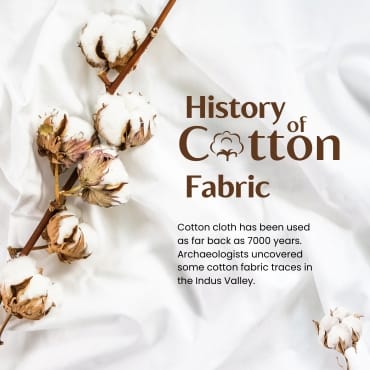
Cotton is a soft natural fiber that grows in fluffy bolls on a plant. People have used it for over 7,000 years because it feels soothing and allows the skin to breathe.
Furthermore, it is also skin-friendly and requires little scrubbing or harsh chemicals for washing. Because of all these reasons, people use cotton in virtually everything in their daily lives.
Types of Cotton Plants
There are four main types of cotton, here are they:
Upland Cotton is the most common type which makes up roughly 90 percent of the world’s cotton.
Egyptian Cotton which is known for its long and silky Fibers
Pima Cotton is the one that is soft and strong and mainly grows in America.
Tree Cotton is less popular and can be found in Asia.
Different types are used for different materials.
How Cotton is Grown
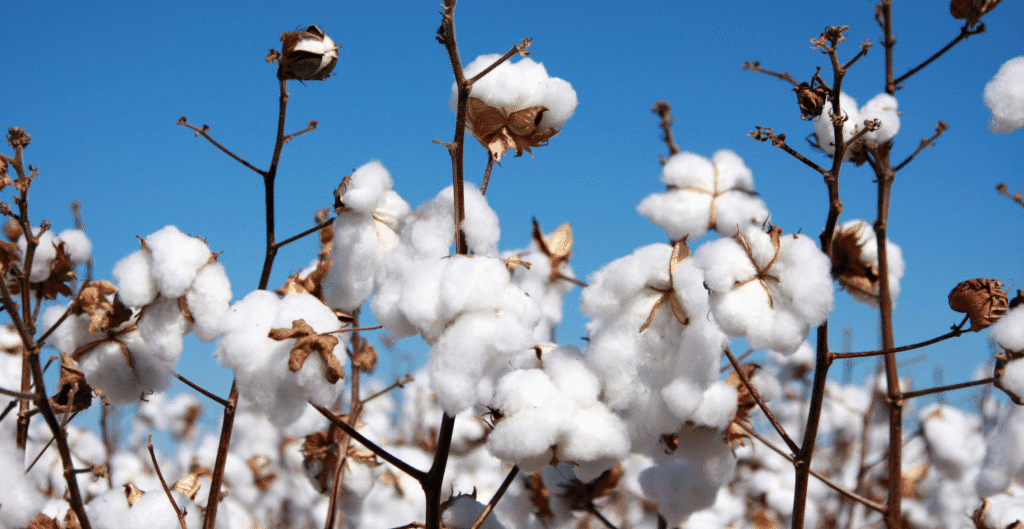
As with most crops, cotton needs the sun, heat and good soil. It’s a given that farmers have to tend to the fields before planting seeds and they can use various tools be it machinery or manual.
Cotton Fiber Growth
In spring, the seeds are placed in the soil. This activates a process that eventually results in the growth of green plants. After a couple of months, the plant grows white bolls, and cotton fibers form inside them.
When and How Cotton is Harvested
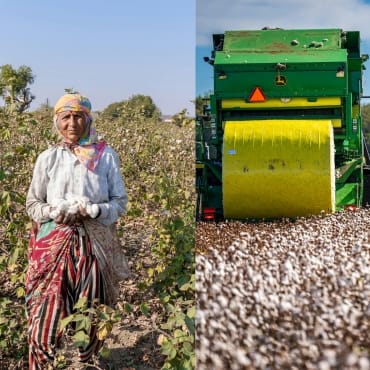
Workers can harvest bolls when they dry out and turn brown. In some areas, laborers pick the cotton manually, while others use machines, which are more common on larger farms. Farmers package the harvested cotton and send it for the cleaning process.
The Ginning Process: Separating Cotton From Seeds
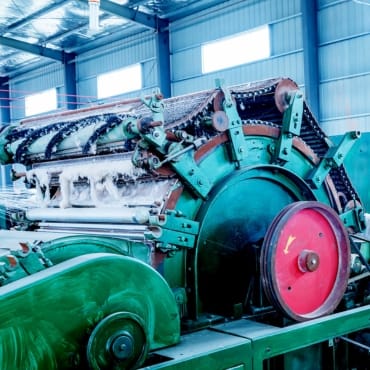
Next comes the ginning step, where machines remove the seeds from the cotton. The gin pulls the fibers along with small particles out of the cotton. It also fluffs the cotton to prepare it for the next stage. At this point, we call the cotton lint. Manufacturers don’t waste the removed seeds; instead, they use them to produce cottonseed oil or animal feed.
Making Cotton Bales
Workers compress clean cotton into bales, tightly wrapping them into chunks. One of these bales can weigh up to 500 pounds! Workers then bring the bales into factories, where they turn them into threads and fabric.
Spinning: Turning Lint into Yarn
First, workers card the cotton fibers to untangle them. Next, machines align and twist the fibers, which gives the yarn its elasticity and strength. Finally, this yarn is what you see in your T-shirts.
Spinning Methods Overview
Soft yarn is produced by Ring spinning, which works at a slower pace.
Open-End Spinning employs a quicker and more economical approach, yielding fibrous and durable yarn.
Based on the type of fabric they want to produce, factories choose either method.
Testing and Strengthing the Yarn
Yarn is tested first before moving on. Workers verify it for integrity and girth.
Workers eliminate weak threads, while only strong threads progress to the next stage.
Woven Cotton Warping
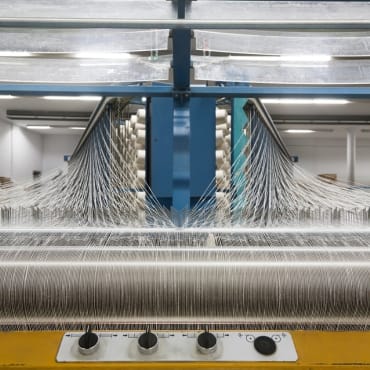
The first step of weaving involves warping, where workers align the threads in a single file.
During weaving, workers move threads over and under one another, resulting in a non-bulky and flat fabric.
Cotton Yarn Knitting
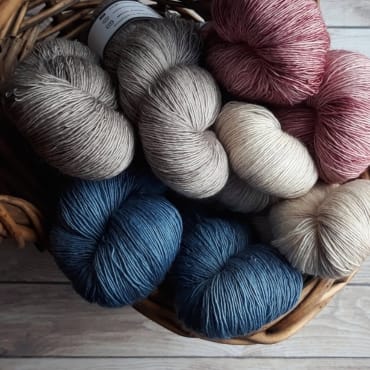
Knitted cotton forms in the shape of soft and elastic mesh rather than woven.
This is ideal for socks, t-shirts and even infant clothing.
Removing the Natural Color: Bleaching
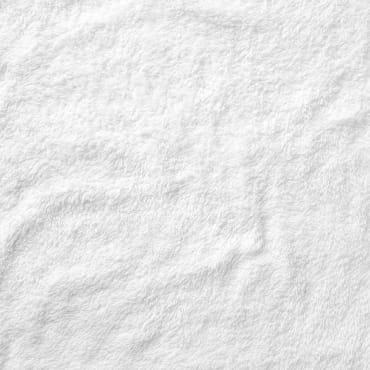
The initial state of cotton is not pure white due to it being slightly yellow, which means the cotton needs to bleached.
It prepares it for being dyed. Bleaching removes any germs or bacteria as well.
Adding Color to Fabric: Dyeing
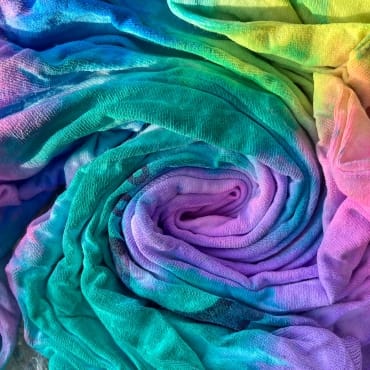
Now comes the fun part, color! In large tanks, the cotton fabric is given color.
Crisp-dry washing gives you vivid red, calm blue, and bright green colors.
Printing on Cotton Fabric
Fabric printing offers patterns or intricate designs.
To achieve this, screen printing uses stencils while digital printing employs an inkjet printer.
Hand block printing incorporates the use of carved blocks.
Finishing by Drying
The final step entails fabric drying after it has either been dyed or printed on.
The fabric next goes into the smoothing stage and undergoes softening, stretching, and ironing; this stage prepares it for usage.
How To Verify the Quality of the Fabric
Before selling, each piece undergoes scrutiny. Workers inspect for holes, tears, and faded spots.
Workers check the fabric for color and strength, and only the best fabric passes the inspection.
Packing and Shipping Cotton Fabric
Workers place the folded fabric in boxes, label them with color, type, and size, and then send them around the globe.
The Environmental Effects of Cotton Fabric Manufacturing:
Cotton farming is water-intensive, and Chemicals can damage both soil and rivers.
A step in the right direction comes from most of the brands, who now aim for eco-friendly cotton farming since they use ease off on water and hatefully pesticides.
Organic and Recycled Cotton
Organic cotton is described as being devoid of chemical treatments.
The term recycled cotton refers to the fabric created from leftover textile scraps.
Both options have benefits for the Earth.
Out There in the World of Everyday Cotton
Cotton can be found in bedsheets, towels, denim, and even shirts. It also used in medicine such as bandages.
His versatility demonstrates its importance.
How Cotton Compares With Other Fabrics
Cotton is more breathable than polyester, softer than wool, and less shiny than silk, but it’s easier to maintain.
That’s why many choose cotton on a daily basis.
Varieties of Cotton Fabric Egypt Produces
Popular cotton fabrics embrace:
- Muslin – low weight and plain
- Voile – soft and sheer
- Denim – used for jeans
- Poplin – smooth and crisp
Every variety has a different feel and use.
From Cotton To Your Wardrobe Steps
Clothing brands first purchase ready cotton fabric after its manufacturing. Then they cut and sew it to transform into garments.
They sell them later online or in physical stores. That’s how cotton fabric finds it’s way into your closet.
Is Cotton Recyclable?
Absolutely! Old cotton clothes can be recycled into new fabric.
Some are turned into rags or cleaning towels, while others get shredded into fibers.
What’s Trouble in the Cotton Fabric Industry?
Cotton prices fluctuate greatly by region.
Unmanaged excessive drought or rainfall can have a negative impact on growth. In addition, there are some countries that are overly reliant on cotton farming.
The Future of Cotton Fabric
Currently, robots and AI have the capabilities to assist in sorting, dyeing, and quality checking—three essential parts of cotton processing.
Even cotton smart fabrics can change temperature and color.
Tips for Buying Cotton Fabric
- The label should state 100% cotton.
- Inquire if the fabric is made of organic or recycled materials.
- Fabrics can be categorized by level of softness that can be determined by touch.
- Check if the fabric has tight weave or stretch.
- Lastly, check the fabric umping softer grades that have less comparmentalization.
How Cotton Is Manufactured into Fabric
Manufacturing cotton into fabric begins with a seed and culminates in a beautiful garment. This process is complex yet captivating.
Modern machines and traditional skills combine to produce soft yet strong cotton fabric, and people use it for everyday activities.
Conclusion
Now, you understand how manufacturers turn cotton into fabric. It is an intricate process, blending nature, science, and artistry. Factories and fields work in unison, with every step adding invaluable enhancement.
As a buyer, understanding this empowers smarter choices and encourages wearing more thoughtfully. The entire globe is in contact with cotton, whether it be in the form of bedsheets, blue jeans or anything else. One might wonder how cotton is manufactured into fabric. This guide takes a straightforward approach to explain the process.
Let’s begin with a cotton seed and we will show you the whole process till you are wearing a cotton shirt.
FAQs
Cotton comes from the fluffy fibers of the cotton plant.
It can take a few weeks to months, depending on methods used.
Yes! Organic and recycled cotton are eco-friendly options.
Most commercial dyes are safe. Organic cotton uses safer dyes.

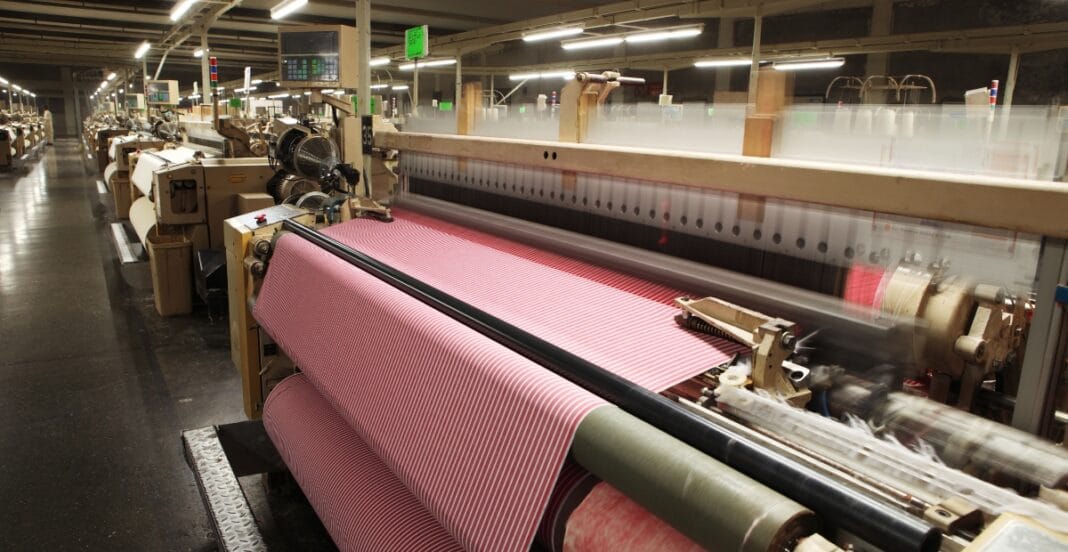

It’s fascinating how much goes on behind the scenes before cotton becomes fabric. I’m curious how sustainability factors into each of these stages—do some methods reduce environmental impact more than others?